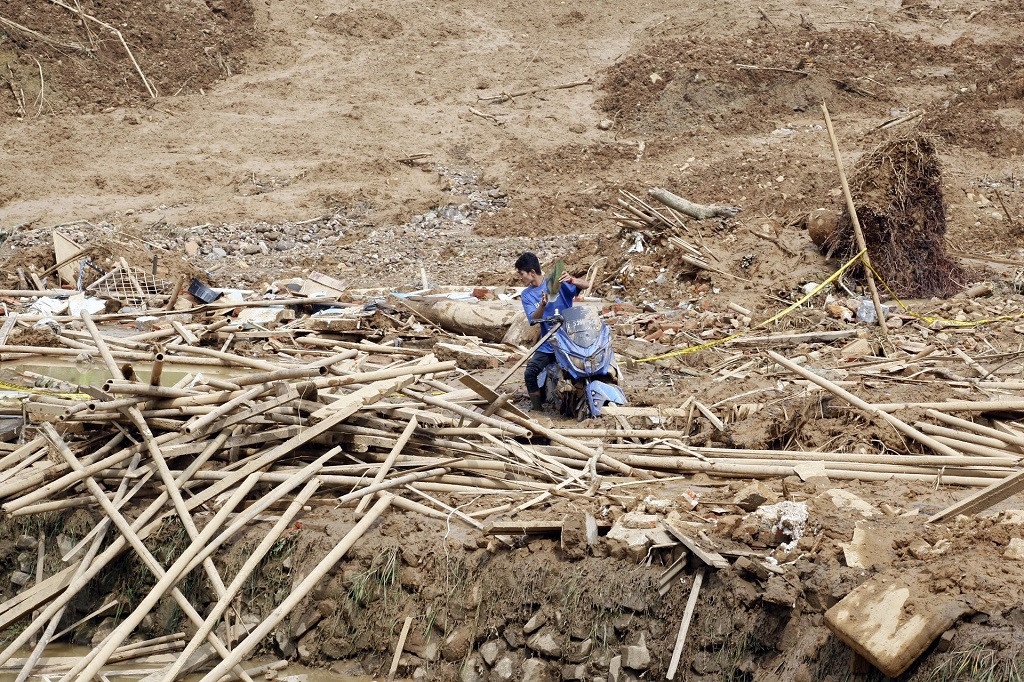Living with disasters
When it peaks in December, La Nina will increase accumulated precipitation up to 40 percent, causing heavy rains that could trigger flashfloods, landslides, as well as storms and cyclones.
Change Size

M
ore than just marking a start to the rainy season, the recent inundation of floodwater in Greater Jakarta and parts of the country were an unwanted prelude to La Nina weather phenomenon, which is associated with natural disasters in the country.
Meteorology, Climatology and Geophysics Agency (BMKG) head Dwikorita Karnawati has warned that the extreme weather resulting from La Nina would be exacerbated by the Madden Julian Oscillation (MJO) phenomenon, which is expected to further worsen high-intensity rainfall. When it peaks in December, La Nina will increase accumulated precipitation up to 40 percent, causing heavy rains that could trigger flashfloods, landslides, as well as storms and cyclones.
Regions prone to flooding and landslides will therefore take the early warning into consideration and take precautionary measures to minimize human and material losses. For Jakarta residents in particular, the New Year floods last January were a grim reminder of the city’s lack of preparations for extreme weather. Such catastrophe could recur in the coming months if no improvements are made to water management systems in the capital.
All regions but Sumatra are experiencing increased rainfall as a result of La Nina. From December until February 2021, heavy rainfall is likely to continue in eastern Kalimantan, Sulawesi, Maluku, North Maluku and Papua.
The National Disaster Mitigation Agency has warned local governments and the people of Bengkulu, South Sumatra and Lampung to increase their vigilance due to the vulnerability of the provinces to floods and landslides.
The scale of disasters facing the country this time around appears to be more severe than those in the previous years. Floods, flashfloods and landslides, when they happen, will aggravate the socioeconomic impacts the ongoing COVID-19 pandemic has inflicted on millions of people. The pandemic has slowed down efforts to rescue disaster victims and deliver humanitarian assistance. Conversely, the disasters themselves could accelerate transmission of the coronavirus disease.
As of today there are no signs that the pandemic will subside anytime soon, with more than 404,000 people contracting the virus and over 13,700 succumbing to it since early March. Cross-border human mobility during the ongoing collective leave holiday, which began Wednesday, is feared to result in a jump in the number of infections.
The risk of a COVID-19 transmission boom will further increase when 270 regencies, cities and provinces host local elections on Dec. 9, even if all voters, candidates and poll organizers comply with health protocols.
Uphill challenges await the central and local governments if the double disaster really occurs. The coming two months will not be enough to repair drainage systems, dredge canals and normalize rivers, but they must be enough to educate people living in disaster-prone areas on what to do when a disaster strikes and on monitoring for early warnings.
Indonesia is listed as one of 35 countries with a high risk of natural disasters. But this cannot justify needless loss and suffering should the worst arise.









